City Building
Building Resilient Communities: How Lakeview Village is Designing a Sustainable Community

City Building

There is a lot of research to support the benefits, short- and long-term, of building resilient communities. But what exactly does that mean?
“Resilient communities are the ones that are able to bounce back and adapt to changes. Those changes could be market conditions, they could be environmental, they could be a response to trauma. Resilient communities have the ability to adapt and thrive. They’re able to anticipate what’s ahead and learn from previous experiences or those of other cities. They’re future-proofed,” David Scott, a vice-president at T.Y. Lin International, says. They’re also heavily invested in innovative and sustainable technologies that improve the built environment.
It’s something the Lakeview Community Partners Limited team witnessed first-hand while touring Scandinavia to learn about how these kinds of communities are built. They learned about how the Swedish have all but eradicated landfills and how Denmark and Norway became an early adopter of electric vehicles. They also heard about Copenhagen’s strategy to reduce greenhouse gas emissions and reviewed the plans of cities that are just beginning their sustainability journey.
Each lesson they learned went on to inform the design of Lakeview Village. The result is a plan that incorporates global learnings that will make the community a uniquely resilient place that benefits and empowers all residents, regardless of their age or the stage of life they’re in.
The only catch? Bringing this plan to life has been anything but easy.
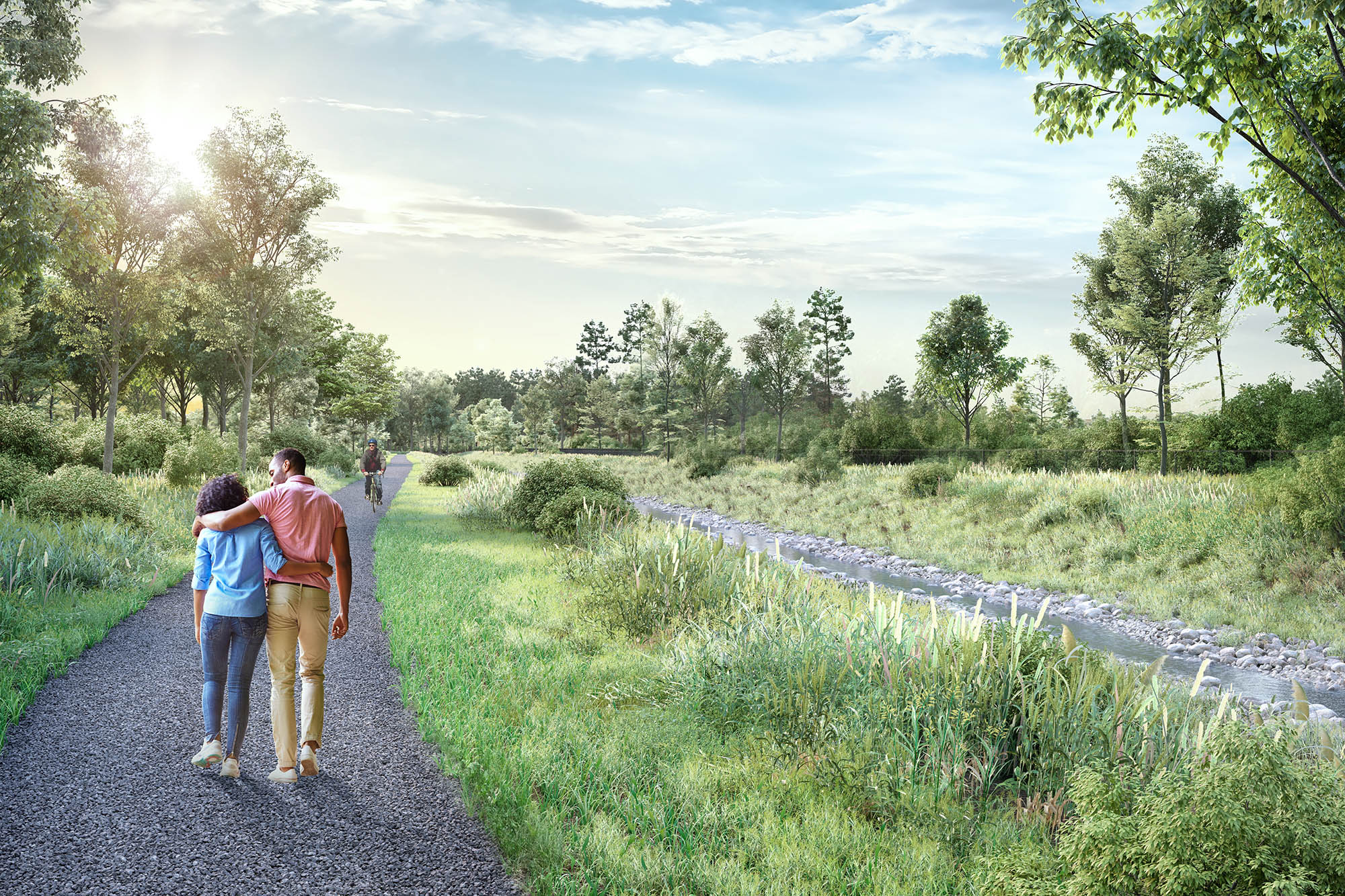
“There are a lot of challenges to building cities that are future-proof. From an economic standpoint, it’s expensive. When we talk about creating sustainable communities or those that reduce greenhouse gas emissions and include large park networks and pathways for biking and walking, there are costs above business as usual… costs that go beyond the ‘way we used to build communities,’” David says. “Stakeholders [like municipal governments] need to buy into the fact that there are great benefits to spending more on this kind of innovative design.”
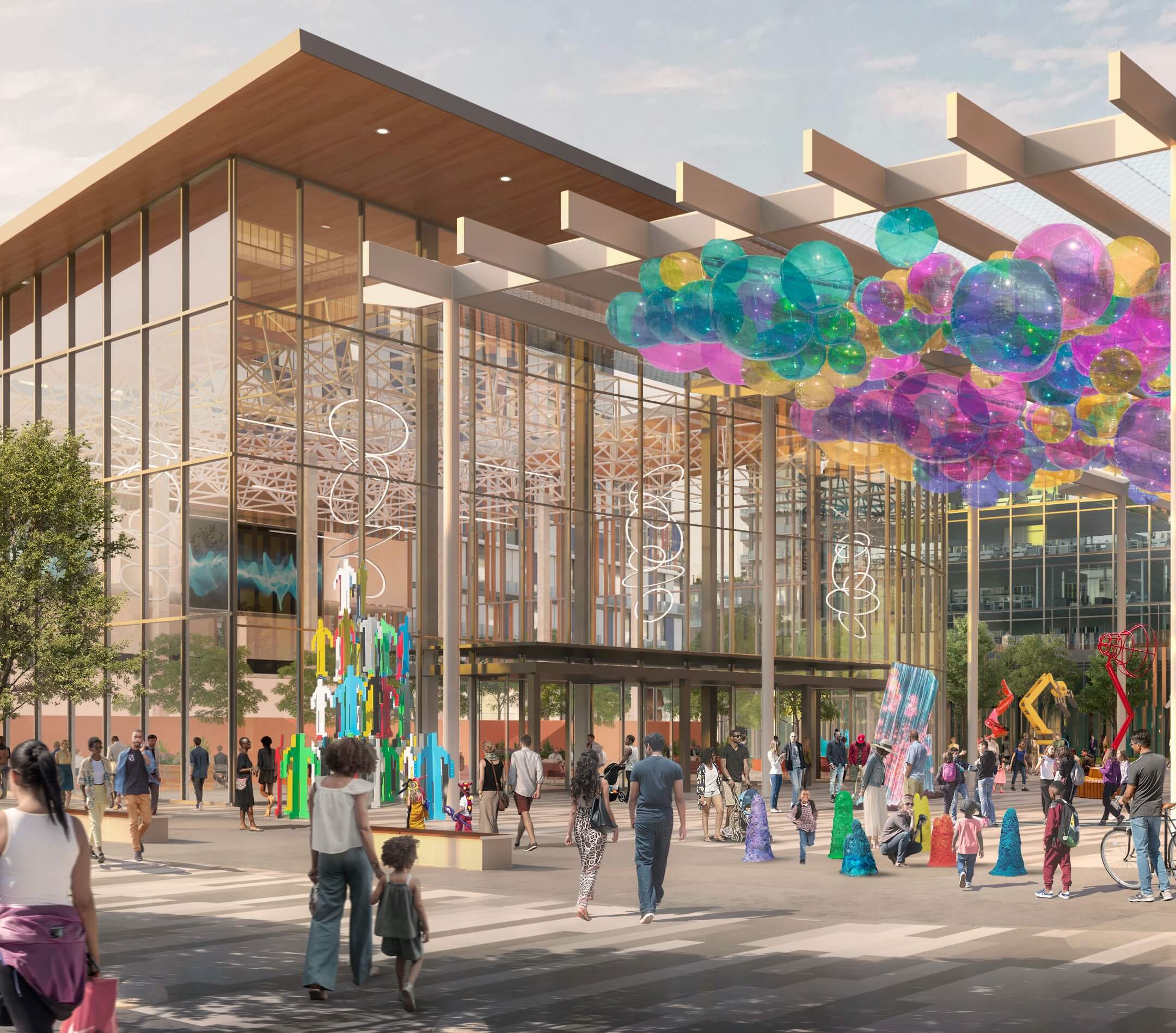
There are also policy and space challenges. As David notes, many municipalities and stakeholders are slow to evolve their building policies to be more accommodating to the innovative and groundbreaking infrastructure that’s required to build a community that’s truly resilient. Much more time is required to be spent with the municipality to share knowledge and support the development of policies that will allow for such community building. “While most City staff see the positives of building in new and innovative ways, there is a lot of scrutiny and learning required in these early stages.”
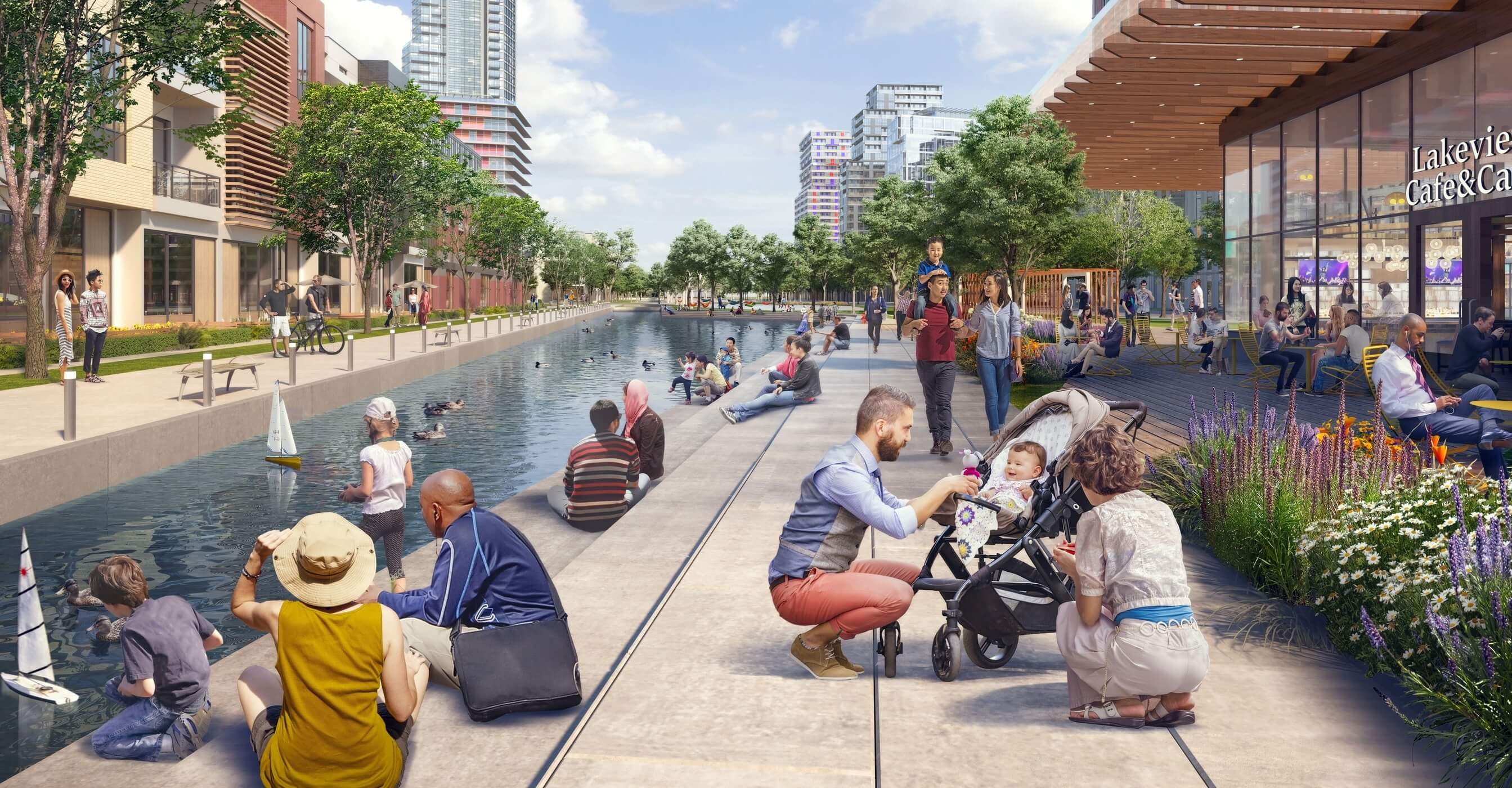
That dissuades a lot of developers from investing the time and money into building communities that can truly be called resilient and sustainable. But not the team behind Lakeview Village. “At Lakeview Village, we’re trying to do better. We’re putting costs on ourselves, we’re taking the extra time to work with the City of Mississauga and the Region of Peel to evolve their policies,” says Matthew Marsili, senior development manager at Argo Development Corporation and member of the Lakeview Community Partners Limited team. “Everyone in this region will benefit from [what we’re doing here]. Maybe, one day, other communities will even be able to use what we’re doing - the technology, the plans - to make their neighbourhood greener and more sustainable for future generations.”
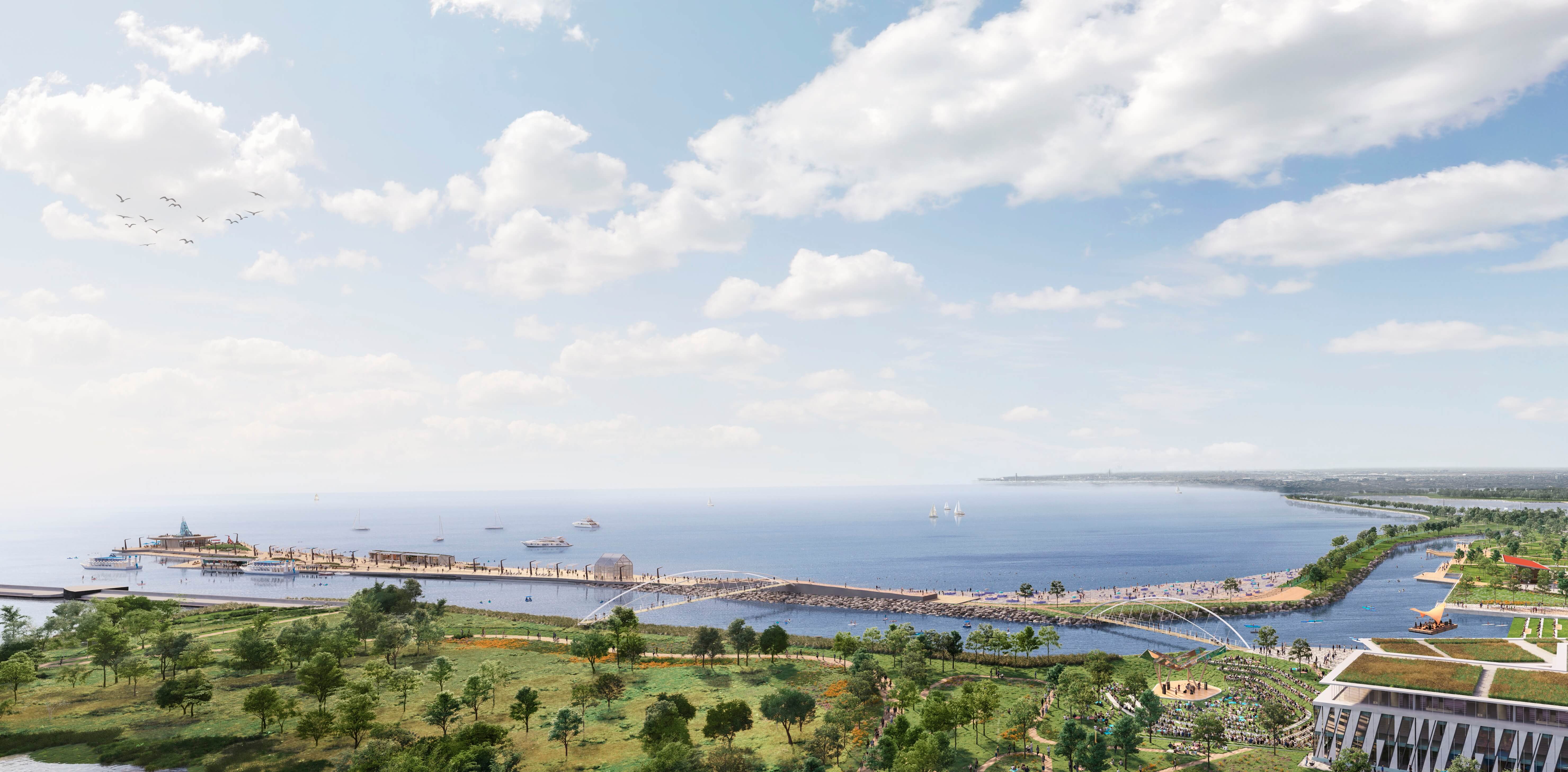
“[First and foremost], the location of our site is called Lakeview - it directly speaks to our priority focus of [protecting and preserving our most important natural resource], water,” says Matthew. It’s a move the United Nations says is absolutely critical given climate change. The organization estimates nine out of 10 natural disasters in the last decade were water-related. These disasters cost communities in terms of money and the health of its residents. To ensure water at Lakeview Village is preserved, protected, and reused as efficiently as possible, Matthew notes there are plans to integrate technology, including low impact development standards, that will help purify water, so fewer toxins end up in Lake Ontario. There are also plans to capture and reuse rainwater and grey water to water greenspaces and potted plants. “We’re some of the first [developers] to use a mix of this technology… it’s so important given our location.”
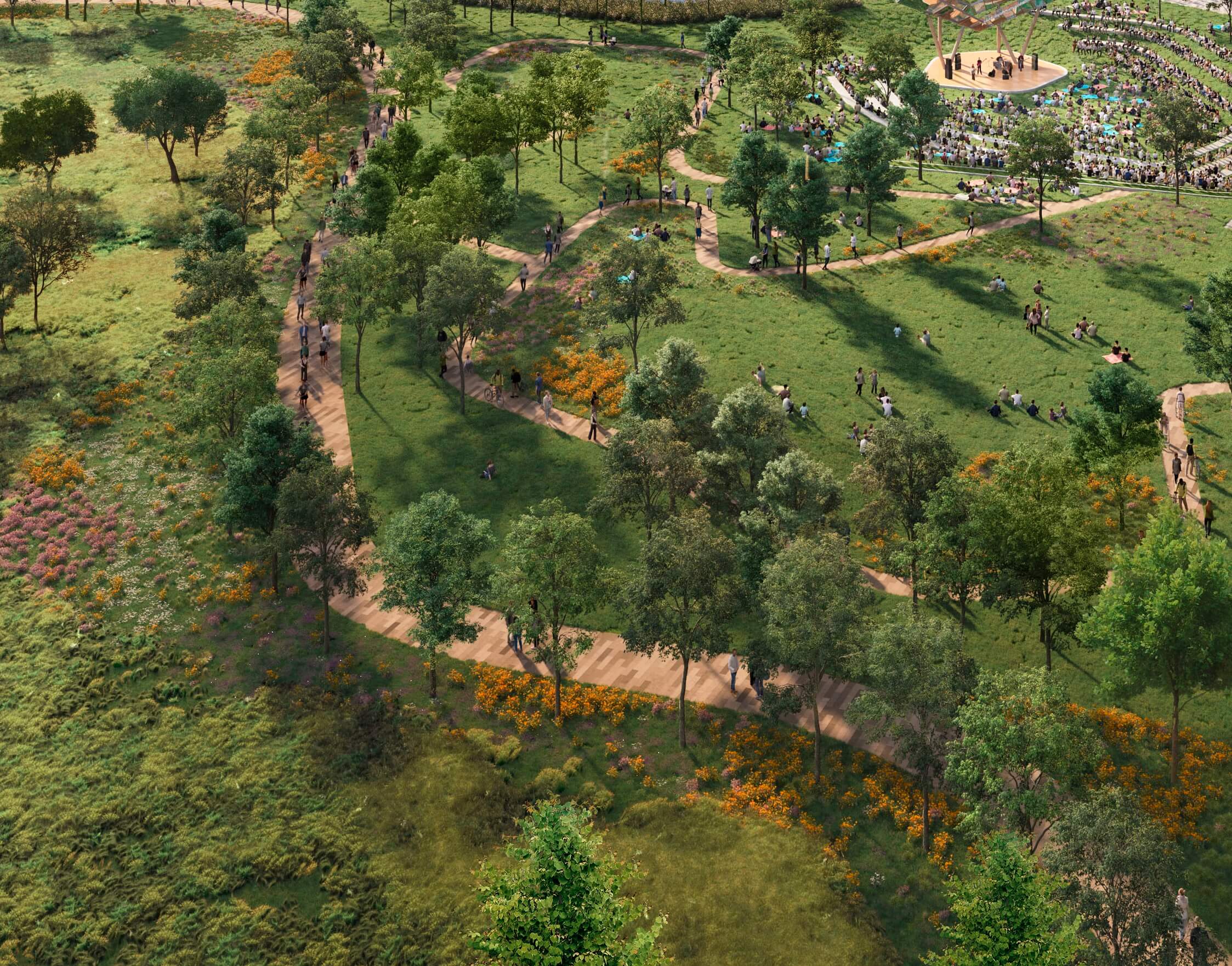
Incorporating nature into the fabric of a community isn’t just a smart move for citizens - it can enhance their mental health and well-being and gives them an opportunity to connect with their neighbours - it’s a necessity to help mitigate the effects of climate change, especially when it comes to heat reduction. Beyond providing shade on hot days, research has shown that urban green spaces, wetlands, and trees can reduce surface land temperatures by up to 12°C. They also help clear the air of greenhouse gases at faster rate than previously thought. This is why the Lakeview Team has invested in building a massive network (45 acres!) of parks and trails, lively beaches, and coastal wetlands. Both Matt and David note they’re also assisting to restore and revitalize a 64-acre conservation area - the Jim Tovey Lakeview Conservation Area - alongside Credit Valley Conservation (CVC), the Region of Peel and Toronto, and Region Conservation Authority (TRCA) to ensure local species have the ability to grow and thrive.
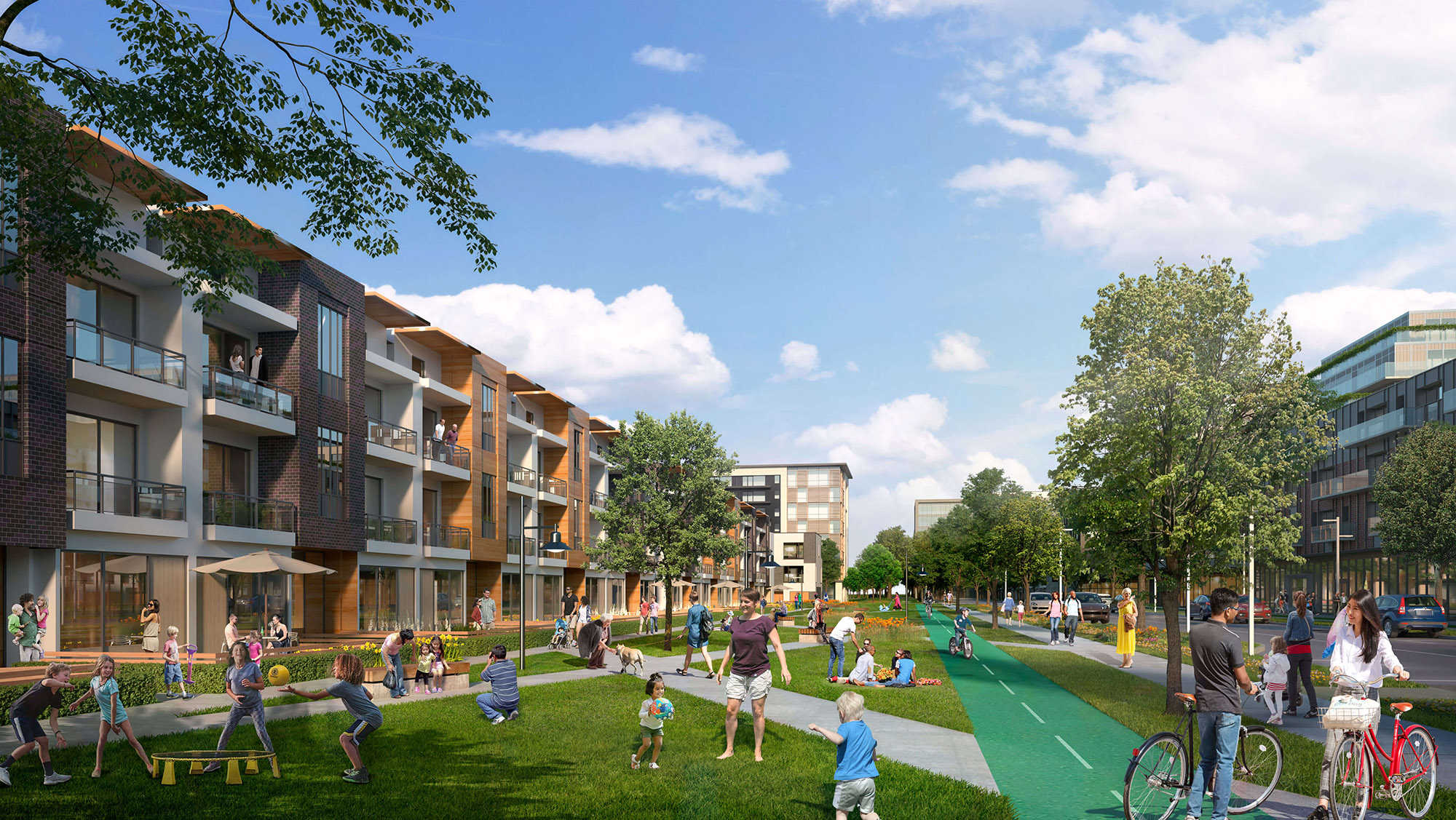
Homes, shops, restaurants, and office spaces use a lot of energy. “In Canada, heating, cooling, and domestic hot water comprises 80 percent of this energy usage,” David notes. That’s why it’s critical “for developers to work with all levels of government to find innovative ways to heat and cool buildings.” At Lakeview Village this will come in the form of District Energy, a unique technology that involves building a series of pipes to distribute heating, cooling, and domestic hot water throughout the community. These pipes are all buried underground and will replace large boilers and chillers that are commonly housed on building roofs. The result will be a freeing up of visible space for the planting of trees, building of green roofs, and setting up of rainwater capture systems. Lakeview Village’s system - designed, owned, and operated by Enwave - will be the largest District Energy System in North America and will help reduce greenhouse gases by approximately 10,700 tonnes/per year, which is equivalent to removing 5,550 cars from the roads.
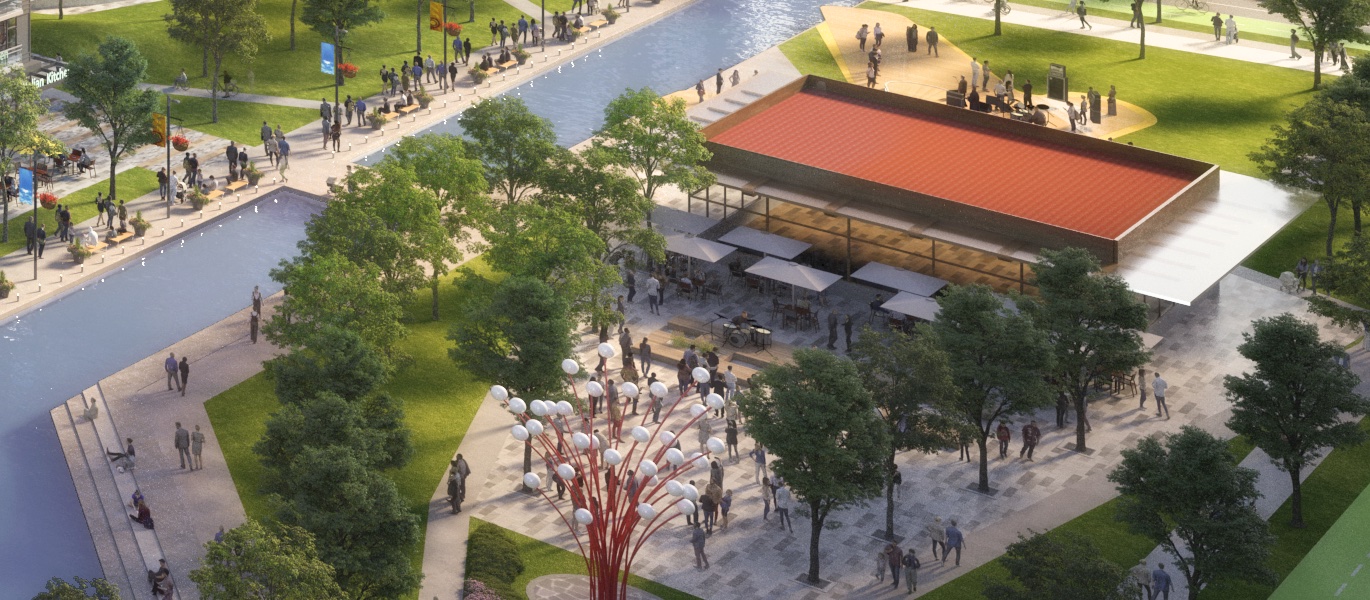
Hard surfaces - everything from driveways to roofs - typically absorb rather than reflect heat, which makes communities with any amount of density hot, David notes. This, in turn, drives people to turn on the air conditioning. At Lakeview Village, the team is looking for ways to dial down the heat. This includes building green roofs and using reflective pavement wherever possible; incorporating greenspaces into the fabric of the community (like those mentioned above); and reducing the need for people to use their car (gas-powered cars not only generate a lot of heat they pump carbon dioxide emissions into the air).
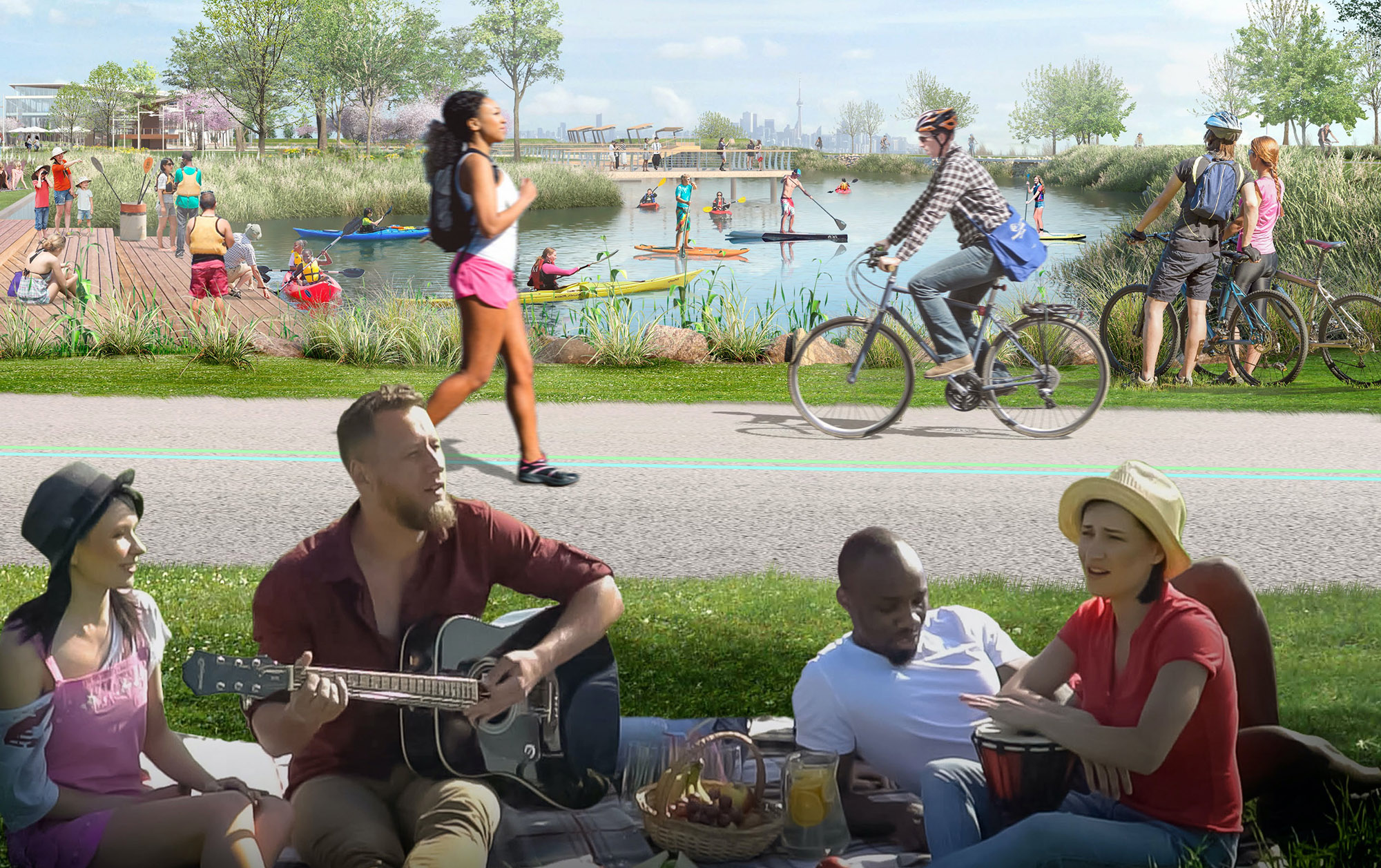
Lakeview Village will be a community made for connecting people to the places they want to go by bike, on foot, or through public transportation. This is critical when you consider that research suggests 70 percent of our carbon emissions are directly influenced by the built environment. The Lakeview Village team is working with the City of Mississauga to include dedicated bike paths and trails throughout Lakeview Village, something that supports Mississauga’s Cycling Master Plan, and is also looking to increase access to public transportation options. This includes bringing MiWay Bus service into the fabric of the community (complete with two stops) once the first new residents have moved in. The City also plans to integrate a Bus Rapid Transit (BRT) line within Lakeshore Road, along the frontage of Lakeview Village. Ultimately, this BRT is envisioned to be replaced with a Light Rapid Transit line (LRT), something that aligns with the City Council endorsed Lakeshore Connecting Communities Transportation Master Plan. Electric vehicle charging stations, bike-sharing stations, and spaces to store scooters within Lakeview Village will also be commonplace.
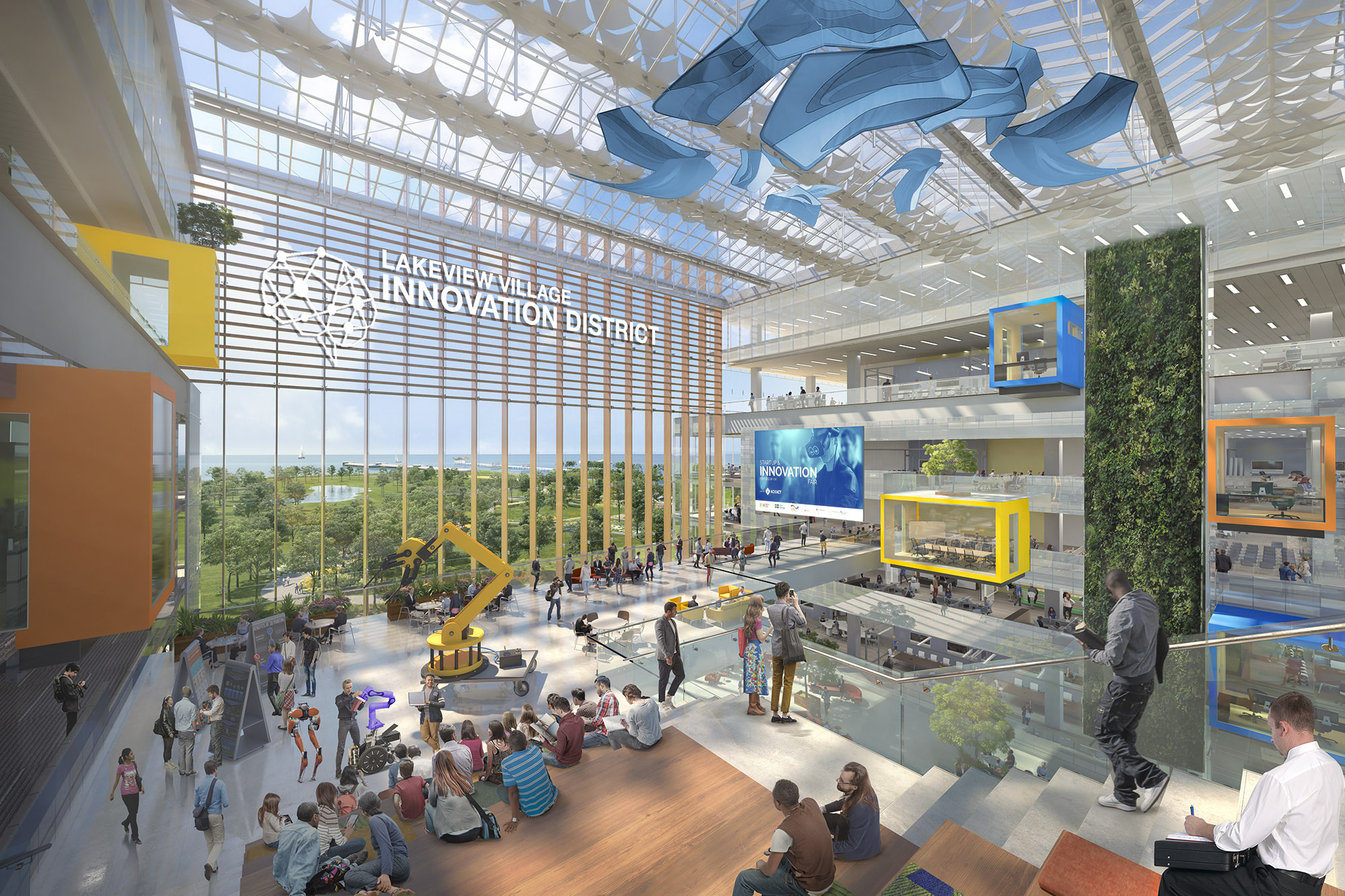
Lakeview Village’s Innovation hub is set to become one of the largest hubs for innovation and research in Canada, paving the way for creative problem solving into issues like climate change, energy resilience, mobility solutions, the advancement of medical technologies, and the preservation of our Great Lakes. It’s also set to bring 9,000 jobs to Canada. Beyond all of that, though, David sees the incredible opportunity that having a 20+ acre campus devoted to innovation in a community can have. “There are so many great benefits… Lakeview Village will be like a sandbox for determining needs and developing sustainable solutions [to problems people around the world are facing].” Essentially, it will be a part of evolving solutions to build a more resilient world.
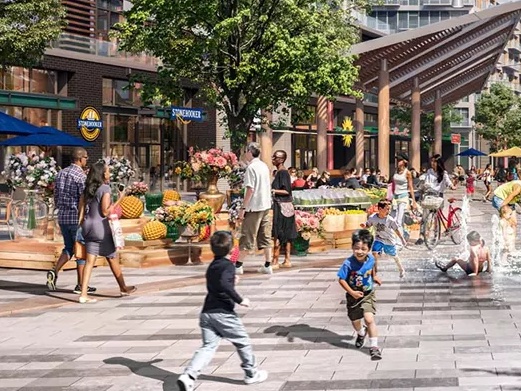
“At the end of the day, we believe leading by example - and working through any challenges we face - is really important. It’s why we’re obviously excited about all of the things we hope to implement at Lakeview Village, like bringing forward sustainable elements - including District Energy - and creating a vibrant mixed-use community that’s viable” Matt says. “Many communities have traditionally been developed in a non-sustainable way, and that’s worrying because of climate change. It’s worrying when people spend their time in cars instead of in a walkable community. We want to make this a successful project that shows how these kinds of places, these examples of resilient communities, are valuable. We want to change that narrative.”
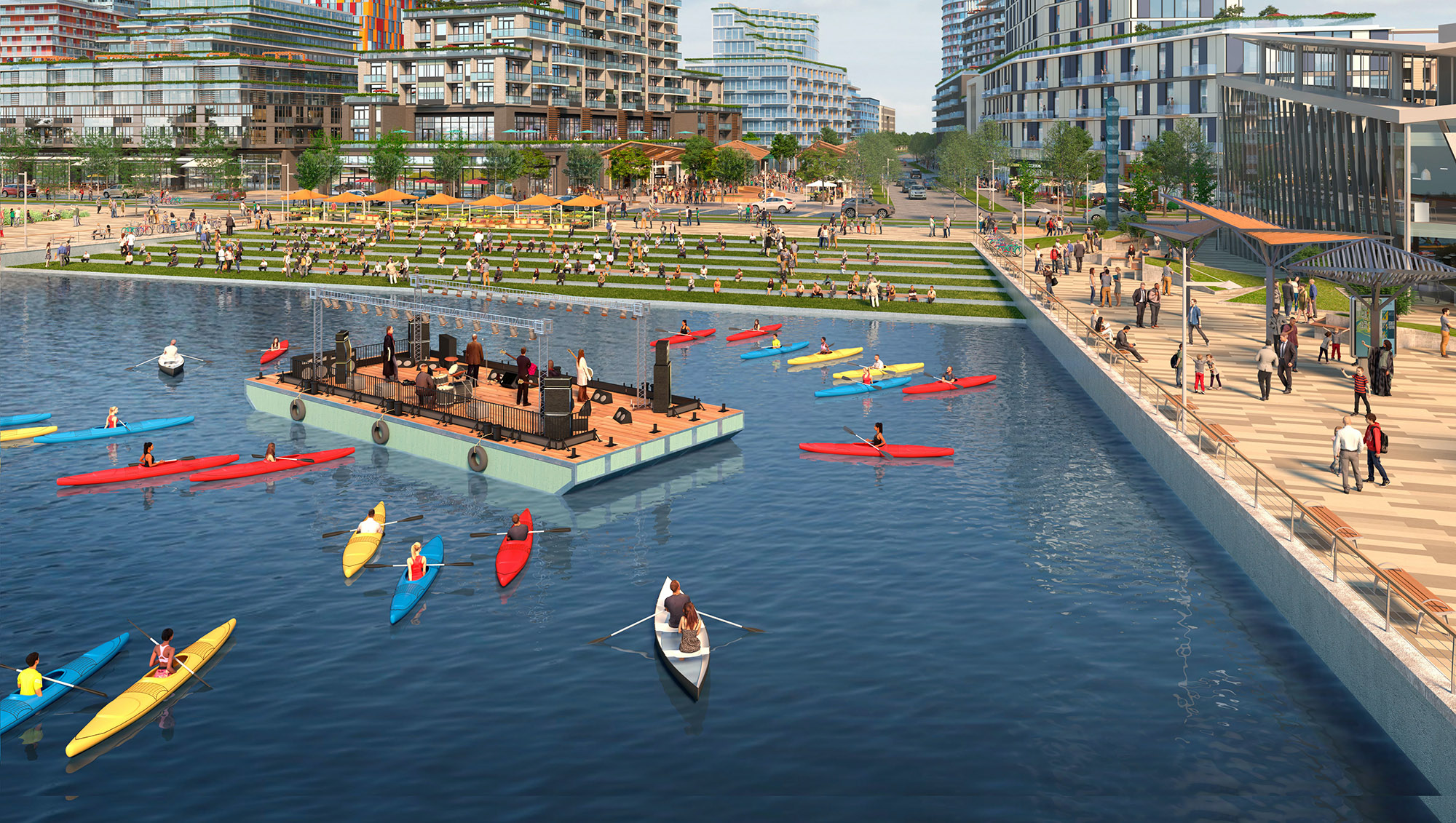
David agrees. “The reality is the world's growing at a pretty rapid pace, and with that growth comes a lot of strains and opportunities for doing things differently - environmentally, economically, socially. I feel pretty strongly that we have to lead by example to show how to [work toward solving the challenges we’re all facing]. Building features and aspects into a community that addresses those things, including climate change, gives encouragement to individuals and other communities to do the same. If everyone is invested in implementing solutions whether large or small [and doing some of the things we want to do] it’ll go a long way.”